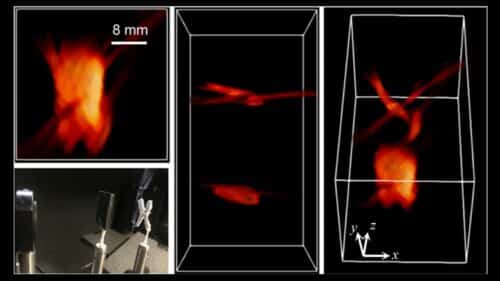Bioengineers have developed bionic 3D camera systems with extraordinary depth range that can also scan through blind spots.
Bugs have an extraordinary way to look around them. They have geometric compound eyes, in which each eye consists of hundreds of individual units of sight. This makes them see the same thing from multiple lines of sight. Bats can visualize a vibrant picture of their surroundings in the dark using echolocation or sonar.
Bioengineers at University of California, Los Angeles (UCLA) have developed a camera system using these concepts of echolocation and multiple line of sight. The adapted technology can decipher the shape and size of the objects hidden in the vicinity and around the corners.
“While the idea itself has been tried, seeing across a range of distances and around occlusions has been a major hurdle,” said Liang Gao, an associate professor of bioengineering at the UCLA Samueli School of Engineering.“To address that, we developed a novel computational imaging framework, which for the first time enables the acquisition of a wide panoramic view with simple optics and a small array of sensors.”
They designed a framework called “Compact Light-Field Photography ” or ‘CLIP’, that allows the camera system to see with high depth range around the objects. The system reconstructs the combined scene to a high resolution 3D image from an array of low resolution images recorded using seven lidar cameras.

“If you’re covering one eye and looking at your laptop computer, and there’s a coffee mug just slightly hidden behind it, you might not see it, because the laptop blocks the view,” Gao explained. “But if you use both eyes, you’ll notice you’ll get a better view of the object. That’s sort of what’s happening here, but now imagine seeing the mug with an insect’s compound eye. Now multiple views of it are possible.”
The researchers believe the technology can be incorporated into autonomous vehicles or medical imaging tools “with sensing capabilities far beyond what is considered state of the art today”.









